When you invest in a security system—whether it’s a sophisticated commercial setup or a basic residential alarm—you are purchasing peace of mind. However, unlike a static lock, an electronic security system is a complex network of sensors, wires, batteries, and communication devices that requires active care. Too often, homeowners and business owners install a system and forget about it until a critical failure occurs, usually during an emergency. This negligence defeats the entire purpose of having the system in the first place.
Regular burglar alarm maintenance is not merely a box to tick on an annual compliance list; it is a fundamental requirement for ensuring your security apparatus remains operational, reliable, and capable of responding instantly when danger strikes. A properly maintained system deters intruders, protects assets, and, most importantly, safeguards occupants. Conversely, a neglected system is nothing more than a potential source of frustrating false alarms or, worse, a silent failure when it matters most.
This comprehensive guide delves into why preventative care, both professional and user-led, is non-negotiable, detailing the precise components that require attention and outlining best practices for effective house alarm maintenance.
Contents
- 1 Why Alarm Maintenance Isn’t Optional: Beyond the Warranty
- 2 The Anatomy of a Comprehensive Burglar Alarm Maintenance Check
- 3 DIY Checks vs. Professional House Alarm Maintenance Services
- 4 Specialized Maintenance Considerations for Different Alarm Types
- 5 Troubleshooting Common Issues Before They Escalate
- 6 The Financial and Safety ROI of Dedicated Burglar Alarm Maintenance
- 7 Choosing the Right Provider for Your Security System Servicing
Why Alarm Maintenance Isn’t Optional: Beyond the Warranty
Many people assume that because their system is relatively new, maintenance is unnecessary. This misconception ignores the environmental, electrical, and technological stresses placed on security equipment 24 hours a day, 365 days a year.
Ensuring Reliability and Preventing False Alarms
The primary goal of burglar alarm maintenance is reliability. An unreliable alarm system is dangerous because it leads to complacency and potential non-response from monitoring centers or local authorities.
False alarms are the bane of the security industry. They are disruptive, often incur fines from police or local municipalities, and, over time, desensitize neighbors and emergency responders. The vast majority of false alarms are not caused by user error but by component failure: dying batteries, loose connections, dust buildup on passive infrared (PIR) sensors, or environmental interference. Regular servicing ensures these minor faults are identified and corrected long before they trigger an unwarranted alert. A technician performing professional house alarm maintenance will calibrate sensors, check signal strength, and ensure all contacts are functioning within tolerance levels, drastically reducing nuisance alarms.
Meeting Insurance and Regulatory Requirements
In many jurisdictions, especially for commercial properties or high-value residential homes, insurance policies mandate regular servicing by certified professionals. If a break-in occurs and your alarm system fails due to documented lack of upkeep, your insurance claim could be complicated or even denied.
Furthermore, if your alarm system is monitored, the monitoring station often requires proof of annual inspection to maintain the integrity of their response protocol. Compliance isn’t just about avoiding penalties; it’s about maintaining the legal and financial safeguards you’ve put in place. Proper documentation of routine burglar alarm maintenance proves due diligence in protecting your property.
Extending the Lifespan of Your Security Investment
Security systems are significant investments. Just like a car, regular servicing protects mechanical and electronic components from premature wear and tear. Batteries, which are crucial for maintaining power during outages, typically degrade over three to five years. If these aren’t replaced proactively, they can stress the control panel and lead to costly repairs down the line. Preventative house alarm maintenance ensures longevity, optimizing the system’s performance for years beyond the initial warranty period, ultimately saving money on replacements.
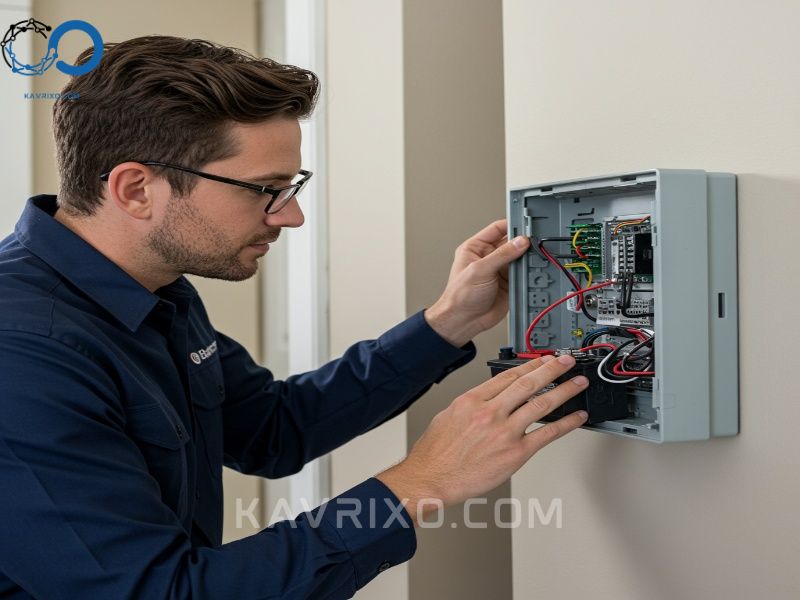
The Anatomy of a Comprehensive Burglar Alarm Maintenance Check
A thorough maintenance check goes far beyond simply testing if the siren sounds. It involves a systematic inspection of every component that contributes to detection, communication, and response.
Power Source and Battery Health Assessment
The power supply is the heart of any security system. The primary power source is usually 120V AC current, but the backup battery is arguably the most critical component during an actual incident, as criminals often cut power lines intentionally.
During maintenance, technicians verify:
1. AC Power Integrity: Checking transformers and fuses for stable voltage input.
2. Backup Battery Performance: The battery is tested under load to determine its capacity and charge retention. A battery that passes a basic voltage test might still fail under the strain of a power outage. Industry standards dictate replacement every 3-5 years, irrespective of apparent performance, as a proactive measure in burglar alarm maintenance.
3. Power Draw: Assessing whether the system’s current draw is within normal limits. Excessive power draw can indicate a short circuit or a failing component.
Sensor and Contact Verification (Doors and Windows)
Sensors are the eyes and ears of the system. If a sensor fails to detect an intrusion, the entire system is useless.
- Door and Window Contacts: Magnetic contacts are checked for alignment and integrity. Vibration, settling foundations, or heavy door usage can cause misalignment, leading to intermittent connection issues.
- Motion Detectors (PIRs): These sensors are cleaned to remove dust, cobwebs, or insect nests, which can significantly reduce sensitivity or trigger false alarms. Sensitivity and range are tested, ensuring they cover the intended zones without overlap or blind spots.
- Glass Break Detectors: These are tested using specific audio simulators to confirm they can accurately register the frequency of breaking glass. This is a crucial step in dedicated house alarm maintenance.
- Environmental Checks: Technicians ensure no new furniture, plants, or décor obstructs the sensor fields of view since the last inspection.
Siren and Communication Testing
The siren is the immediate deterrent and warning signal. The communication module is the link to emergency services.
- Siren Functionality: Both internal (keypad) and external sirens are activated to ensure they meet minimum decibel levels and are functioning correctly. External sirens often contain their own batteries, which must also be checked.
- Communication Pathway Testing: For monitored systems, the technician confirms that the alarm signal is transmitted successfully to the central monitoring station via all designated pathways (POTS line, cellular communicator, or IP/Broadband). This includes checking signal strength for cellular communicators, which can be affected by changes in building construction or local network infrastructure. A communication failure test is one of the most vital steps in professional burglar alarm maintenance.
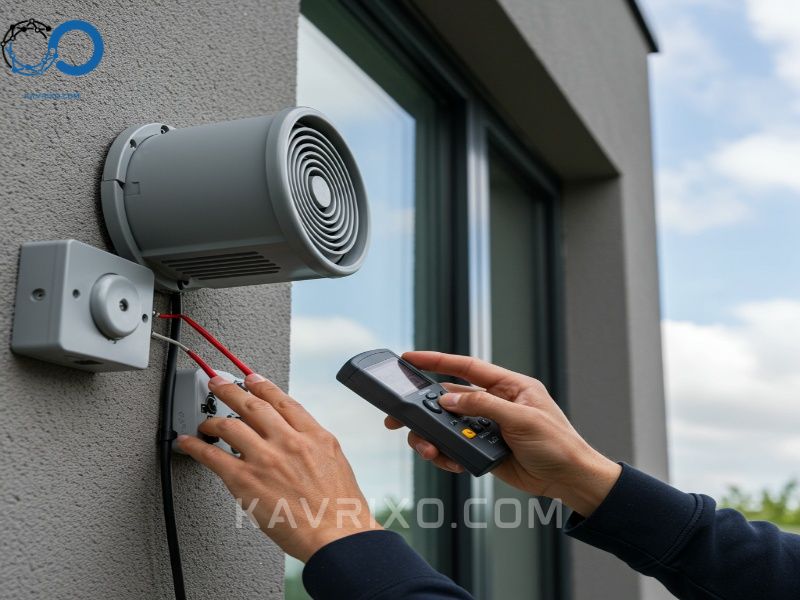
Control Panel Diagnostics and Software Updates
The control panel is the brain. It manages all inputs and outputs and houses the system’s operating software.
- Diagnostic Logs: Technicians review the system’s event history and diagnostic logs. These logs often reveal intermittent faults, low battery warnings, or communication errors that the user might have missed.
- Firmware Updates: Modern, integrated systems frequently require software updates to patch security vulnerabilities, improve sensor integration, and enhance overall stability. These updates are usually managed by the professional service provider as part of the maintenance contract.
- Keypad Integrity: Keypads are inspected for wear, sticky buttons, or display faults, ensuring easy and accurate user interaction.
DIY Checks vs. Professional House Alarm Maintenance Services
While professional servicing is essential, users play a vital role in the day-to-day health of their security system. A successful maintenance strategy involves both routine user checks and scheduled expert visits.
Simple Weekly and Monthly User Checks
Users can perform several simple checks that contribute significantly to proactive maintenance:
- Weekly: Arm and disarm the system to confirm the control panel responds correctly. Check the “status” or “ready” light to ensure all zones are secure.
- Monthly: Perform a simple walk-test. Arm the system and walk through designated motion zones or open and close doors to ensure the appropriate sensor is triggered and registers on the keypad.
- Quarterly: Clean visible sensors. Gently wipe down motion detectors and door/window contacts with a soft, dry cloth to prevent dust buildup, which is a major contributor to reduced sensitivity.
- Power Check: Unplug the main transformer (if safe and accessible) for a brief moment to ensure the backup battery immediately takes over and provides continuous power without generating a fault code. Remember to plug it back in immediately.
When to Call the Experts: Annual and Bi-Annual Servicing
While DIY checks are valuable, they cannot replace the deep diagnostic capabilities of a professional service.
Most security experts recommend professional burglar alarm maintenance at least once per year for standard residential properties and often twice per year for high-usage commercial environments or systems deployed in harsh environmental conditions (e.g., extreme humidity or temperature fluctuations).
Professional servicing is required for:
1. Deep Battery Testing: Load testing and proactive replacement of deep-cycle batteries.
2. Calibration: Adjusting sensor sensitivity, especially for motion detectors that might be affected by seasonal changes (e.g., sunlight angle).
3. Wiring Inspection: Checking all low-voltage wiring for insulation damage, corrosion, or loose terminals—issues that are often hidden within walls or conduits.
4. Regulatory Compliance: Providing the necessary certification or documentation required by insurance providers or local fire/police departments.
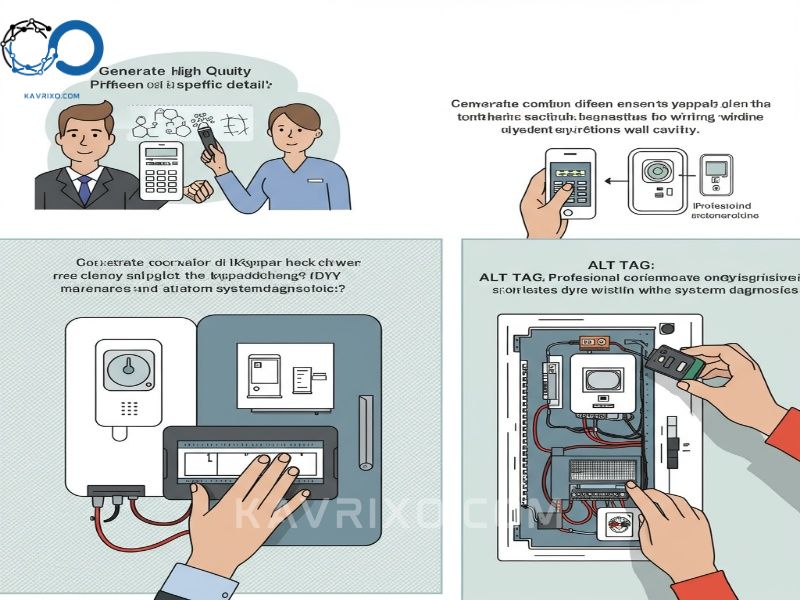
The Benefits of a Maintenance Contract
For consistent performance and budgeting predictability, entering into a formal maintenance contract is highly recommended. These contracts typically include:
- Scheduled Visits: Guaranteed annual or bi-annual professional house alarm maintenance.
- Priority Response: Faster service response times if a fault or failure occurs outside of the scheduled maintenance window.
- Parts and Labor Coverage: Depending on the contract tier, this can cover the cost of replacement parts (excluding consumables like batteries) and the labor required for emergency repairs.
- Remote Diagnostics: Many modern systems allow technicians to perform remote diagnostics to troubleshoot minor issues without an on-site visit, improving response speed.
Specialized Maintenance Considerations for Different Alarm Types
The required burglar alarm maintenance routine changes slightly depending on the underlying technology of your system.
Wired System Maintenance Nuances
Wired systems are generally highly reliable but are sensitive to physical disturbances and environmental degradation. The complexity of wired systems means the annual maintenance check must be extremely thorough regarding cable integrity.
- Cable Integrity: Technicians must visually inspect external cables for rodent damage or UV degradation. Internal wiring connections must be checked for corrosion, especially in damp basements or attics. Loose terminal connections are a frequent cause of intermittent faults in older wired systems.
- Loop Resistance: Measurements of loop resistance are taken to ensure the electrical current flow is uninterrupted and stable, confirming the long-term viability of the wiring infrastructure.
Wireless System Maintenance: Focusing on Signal Integrity
Wireless systems avoid complex wiring but introduce new maintenance challenges centered around communication and power. House alarm maintenance for wireless systems heavily emphasizes battery management.
- Battery Management: Every wireless sensor (door, window, motion) contains its own battery. While the control panel usually signals a low battery warning, professional servicing confirms battery capacity proactively. Ignoring these low-battery warnings is the number one cause of wireless system failure and false alarms.
- Signal Strength (RF Communication): Wireless signals can be affected by new building materials (e.g., foil-backed insulation), large metal objects, or competing wireless networks (Wi-Fi, Bluetooth). The technician must measure the radio frequency (RF) signal strength between each sensor and the control panel to ensure robust communication, which is a critical aspect of modern burglar alarm maintenance.
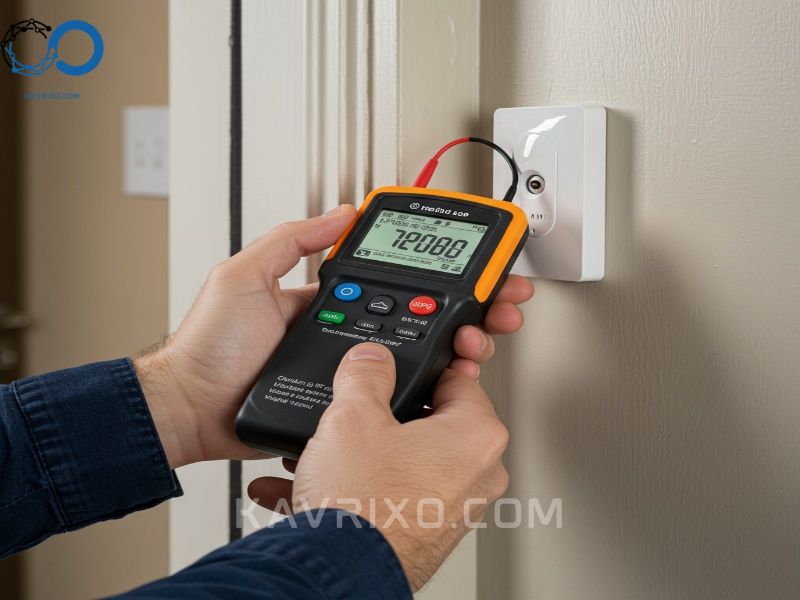
Integrated Smart Home Security Maintenance
Modern security systems are often integrated with smart home devices (cameras, lighting, smart locks). This integration requires maintenance that spans both the security system itself and the network infrastructure supporting it.
- Network Health: The quality of the local area network (LAN) and Wi-Fi connection is paramount. Technicians verify adequate bandwidth and network stability to support high-definition camera streaming and instantaneous alarm communication.
- IP Device Updates: IP cameras, network video recorders (NVRs), and smart locks require regular firmware updates to prevent security vulnerabilities that hackers could exploit. This specialized security system servicing ensures the entire smart ecosystem remains secure.
Troubleshooting Common Issues Before They Escalate
Proactive burglar alarm maintenance means addressing minor glitches immediately before they become critical failures.
Addressing Low Battery Warnings Promptly
When a low battery warning appears on the control panel, it indicates a sensor battery is nearing the end of its life, or the main backup battery is struggling. Never defer these warnings. A sensor with a dying battery might transmit unreliable signals or stop communicating entirely. Replace batteries immediately, using high-quality replacements specified by the manufacturer. If the warning persists, it signals a deeper issue requiring professional assessment.
Dealing with Environmental Factors (Pests, Dust, Moisture)
Environmental contamination is a silent killer of security electronics.
- Pest Control: Spiders are notorious for building webs over PIR sensor lenses, causing movement detection failures or triggering constant false alarms. Rodents can chew through low-voltage wiring. Ensure the environment around key components is clean and, where necessary, implement appropriate pest control measures.
- Moisture: Check for signs of water intrusion near external sirens, contacts, and control panels located in utility rooms. Moisture leads rapidly to corrosion and short circuits, necessitating immediate repair and drying during house alarm maintenance checks.
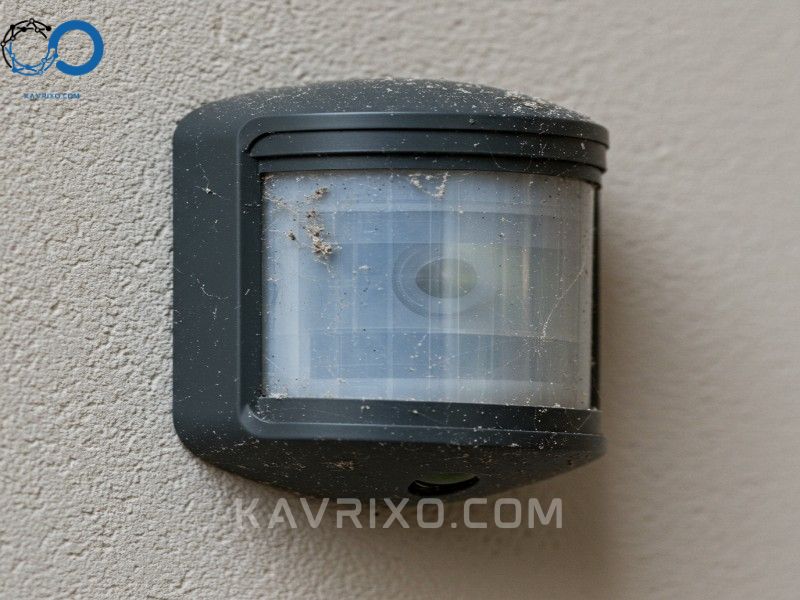
Resolving Communication Failures (Monitoring Issues)
If your system reports a communication failure (e.g., “Comm Failure” or “No Service”), it means the panel cannot reach the monitoring station. This is an urgent security threat.
- Check Physical Connections: Ensure telephone lines (if used) or network cables are securely plugged in.
- Check Internet/Cellular Service: Verify that your home internet is operational or that the cellular signal in the area is strong.
- Professional Intervention: If the issue persists, the communication module itself may have failed, or the monitoring station’s receiving equipment may be experiencing difficulties. This requires immediate professional intervention as the system is currently unmonitored.
The Financial and Safety ROI of Dedicated Burglar Alarm Maintenance
Some property owners view scheduled burglar alarm maintenance as an unnecessary expense. However, when analyzed through the lens of return on investment (ROI), the preventative cost is negligible compared to the potential consequences of failure.
- Avoiding Fines and Fees: The cost of one service appointment is usually less than the cumulative fines incurred from multiple false alarms, which can escalate quickly, especially in metropolitan areas with strict police response policies.
- Minimizing Downtime: For commercial operations, a functioning security system is essential for continuity. Maintenance minimizes unexpected system downtime, preventing costly operational disruptions.
- Guaranteed Protection: The most significant ROI is intangible: guaranteed safety. Knowing your system will reliably call for help during a fire, medical emergency, or intrusion provides true peace of mind that justifies any maintenance expenditure. A professional house alarm maintenance contract is essentially an insurance policy on your existing security investment.

Choosing the Right Provider for Your Security System Servicing
Selecting the right partner for your burglar alarm maintenance is critical. You need a provider that is knowledgeable, reliable, and uses certified technicians.
When selecting a maintenance provider:
- Check Certifications: Ensure the company and its technicians are certified by relevant industry bodies (e.g., SSAIB or NSI in the UK, or state licensing boards in the US).
- System Expertise: Confirm they have specific experience servicing your brand and model of equipment (especially important for proprietary or highly integrated smart systems).
- Emergency Response: Inquire about their guaranteed response time for emergency failures outside of scheduled maintenance.
- Documentation: A quality provider will always supply detailed reports after every service visit, outlining components checked, battery replacements performed, and any recommended repairs. This documentation is essential for insurance purposes and tracking the history of your security system servicing.
Regular, dedicated burglar alarm maintenance transforms your security system from a passive installment into an actively reliable guardian of your home or business. By committing to both professional and user-led upkeep, you ensure that when the moment of truth arrives, your alarm system is ready to perform its vital function perfectly.
